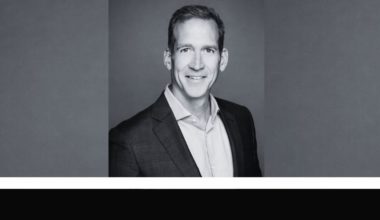Rizan has been in the IT industry for the last 27 years. He has worked for many great software companies like IBM, CA Technologies, Dynatrace, Mercury interactive, BMC, and MongoDB. His roles largely required him to focus on sales & sales management, to grow and scale the organization.
During his time with these companies, he slowly realized that the tools given to salespeople were old-fashioned and prevented them from working efficiently. From then on, he sought to build a tool that would actually make a difference to the way salespeople work and benefit them.
What is iSEEit all about?
iSEEit is a native Salesforce tool which allows sales teams to visualize their sales process on Salesforce, allowing them to instantly identify the gaps in their sales campaigns. It facilitates quick alignment between sales reps, first line sales managers, executive management, and sales ops so that all members of the sales team are on the same page, giving them more time to take preemptive action in order to close their deals.
It is THE tool for Enterprise Sales teams with complex buying cycles looking to implement a more structured sales methodology and achieve a more predictable forecast directly on Salesforce.
While it comes out-of-the-box with the MEDDIC sales methodology, it is fully configurable to suit any sales process or methodology that the team adopts.
Tell us a little bit about your background and how you started your company?
I have been in the IT industry for the last 27 years and worked for great software companies such as IBM, CA Technologies, Dynatrace, Mercury interactive, BMC, and MongoDB. My roles revolved around sales & sales management – to build and grow new sales teams. During this time, we helped our clients run their business in a more modern and automated way through the state-of-the-art solutions that we offered.
However, when I looked at how our sales teams were set up, they were ironically working with old fashioned methods and CRM tools, which were accompanied by a multitude of spreadsheets. They were highly overwhelming and not to mention, outdated.
Hence, I started searching for a solution that would help us better manage our enterprise sales business based on sales processes, enablement, and forecasting. However, I couldn’t find a single one.
This was when I started thinking about building my own software company to serve the market that I knew needed a tool to run their sales campaigns more effectively, in order to close more deals based on their own best practices.
What was the biggest problem you encountered with your business and how did you overcome it?
After developing our first mobile app, we realized that the market that we wanted to serve wasn’t ready yet. The decision-makers were not sold on another standalone platform but wanted us to develop and add value to a well-known and widely used CRM. It wasn’t an easy decision to pivot, as we would lose a lot of functionality and would need to rebuild the software.
However, after going through all the pros and cons, we eventually decided to rebuild – which turned out to be the best decision ever. I later learned that having to reassess the situation and start from scratch was not uncommon. This process even had a name called “pivotal turn.”
Either way, it helped us cross the chasm, stay alive, build a brand and fund the new development to satisfy existing customer needs.
What were the top mistakes you made starting your business and what did you learn from it?
There are actually 2 things that I have learned from the early days that are worth sharing because I have heard them from almost everybody who has built their own business.
Not having enough time & money calculated in the business plan
It usually takes way longer to get a product live and acquire paying customers. Even if your product is unique and needed by the market, it will take 2-3 times longer than expected.
Make sure you can survive this period and have enough investments for your startup without any revenue coming in.
There will be sleepless nights, where you think to yourself “how am I going to pay the bills?”, but with the right planning, you will be able to get through the first few tough years.
Define the commitment level from founding partners
It might feel counterintuitive in the beginning as everybody is excited and willing to commit all their time and effort, but it usually takes more time, money, and work than initially anticipated. The initial parties might eventually go different ways. This is the time where things need to be clarified up front.
- Set up a paper document to define:
- The time and resources they should commit to the startup
- Clear responsibilities and accountability of every member of the team
- The value of time vs. money invested (in case people want to leave early)
What are three books or courses you recommend for new entrepreneurs?
- The Lean Startup – Eric Ries
- Crossing the Chasm – Geoffrey A Moore
- New Rules in Marketing PR – David Meerman Scott
What has been your most effective marketing strategy to grow your business?
We have been bootstrapping along the way with a heavy focus on content marketing to create inbound leads.
Nowadays, prospects have learned to educate themselves from content found on the internet. Providing good and useful content around the topics that your prospects look out for is key to being recognized as a thought leader.
If you only had $1000 dollars to start a new startup, knowing everything you know now, how would you spend it?
I would encourage everybody to look for an incubator. We had the chance to participate in a program which allowed us to learn all about what’s needed – from pitch decks to best business market model and investor requirements.
What’s your best piece of advice for aspiring and new entrepreneurs?
Focus on an idea in an area that you know very well. You can leverage the wealth of information you have and build a base to answer the many questions that will come your way. Master the art of overcoming your hurdles and convince people to support you. It will also make you keep your faith, despite failures and the naysayers who will not believe that your business will take off.
What is your favorite quote?
Success consists of going from failure to failure without loss of enthusiasm.
- We use Hotjar to understand where people spend time on our website.
- We use Calendly to make it easy to meet us.
- We use Mailchimp to build our community and nurture our relationship with them.
How can readers get in touch with you?
Please feel free to connect with me via LinkedIn. I’ll be happy to chat about entrepreneurship, startups, tech, or sales!
Entrepreneur Interview: Interview with Payge H. Kerman Founder of Wink Digital








